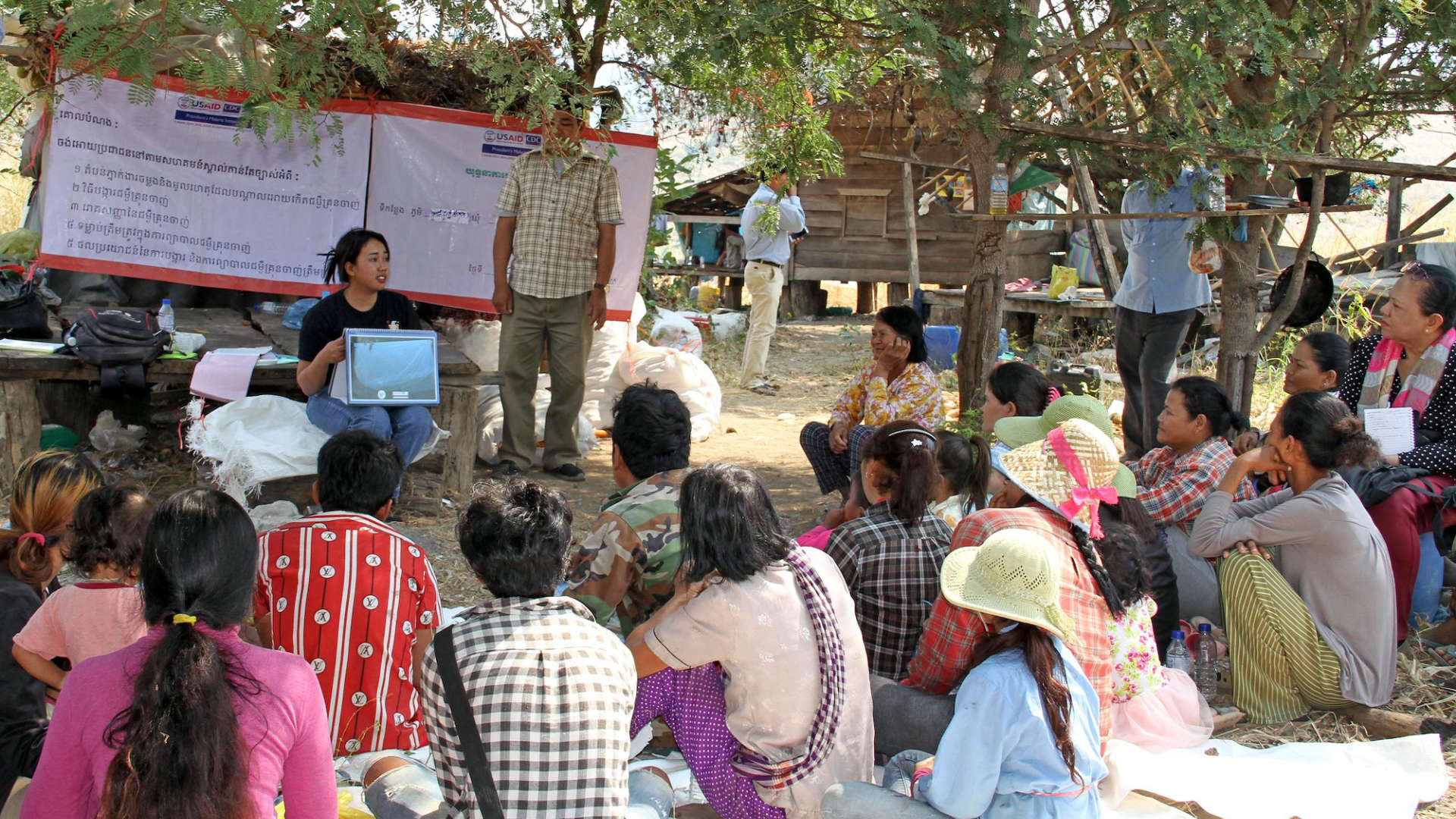Malaria has become an increasingly focal disease in Cambodia, remaining endemic in only distinct geographical areas. This is a dramatic change compared with fifteen years ago, when the disease was endemic across the country. Thanks to the efforts of URC – as a U.S President’s Malaria Initiative (PMI) implementer – together with the Cambodia National Center for Parasitology, Entomology and Malaria Control (CNM) and other partners, overall malaria incidence has decreased from 7.4 cases per 1,000 people in 2006 to 0.26 per 1,000 in 2021.
While malaria cases have declined, identifying and treating the remaining cases is hugely important to achieving – and maintaining elimination in different areas of Cambodia. Mobile and migrant populations, who live and work in remote areas, remain a priority population in malaria control and elimination efforts. As Cambodia moves closer towards elimination, it becomes increasingly important to keep communities engaged in malaria prevention activities where there are few or no cases, to keep people on guard against malaria and maintain elimination. Village malaria workers (VMWs) serve an essential role in this process.
VMWs Educate Communities in Malaria Prevention
VMWs are health workers who provide malaria testing and treatment services in the community and receive performance-based incentives to carry out their work.
VMWs are trained in malaria diagnosis using rapid diagnostic tests, case management, and referral. They ensure high coverage of malaria testing for anyone with a fever and early initiation of effective malaria treatment for those with confirmed malaria.
The Cambodia Malaria Elimination Project 2 (CMEP2) – funded by the U.S. President’s Malaria Initiative (PMI) and USAID and implemented by URC – supports 513 of the 5,460 VMWs in Cambodia. CMEP2 is working with CNM to eliminate malaria from Cambodia.
In areas such as Chhouk Operational District (OD), where new malaria cases are becoming increasingly rare, VMWs focus their efforts on health education, maintaining awareness on malaria prevention methods, and reaching out to community members who work in forested areas for rapid malaria testing and malaria treatment services.
VMWs Adapt to New Community Needs
Nem Chenda, who has worked in Trapaing Skon village as a VMW for years, embodies the successful adaptation to evolving needs for malaria elimination.
“Even though I haven’t diagnosed any new malaria cases in the last few months, I hold health education sessions three times per month with small and large groups to maintain awareness of malaria symptoms and prevention,” Chenda said.
Nearby in Trapaing Raing Village, Ya Pisey is a local shop owner who has received health education from her local VMW. She said that she appreciates receiving long-lasting insecticide-treated nets for her family and that she knows she will be supported by VMWs if she develops malaria symptoms.
In 2021, eight operational districts (ODs) in the CMEP2 catchment area reported zero cases of Plasmodium falciparum malaria. As more ODs report zero malaria cases, more VMWs will be asked to maintain community awareness of malaria, prevention services, and case detection efforts in formerly high-risk areas.



